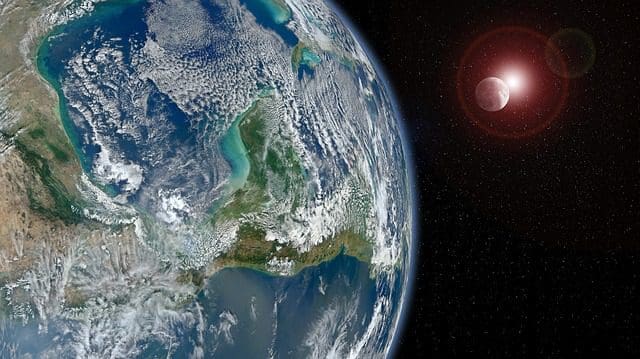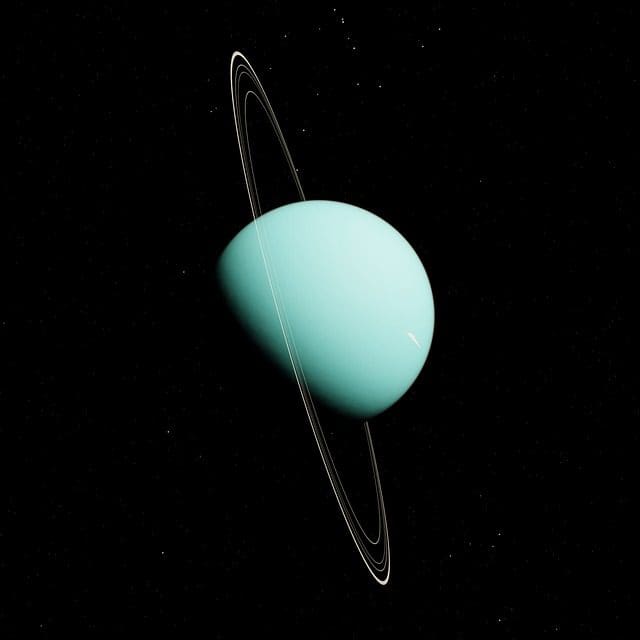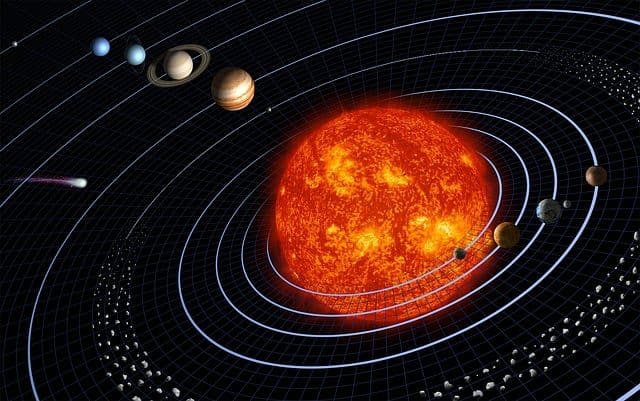As far as we can see, the solar system we reside in is a wondrous creation, with countless hidden mysteries waiting to be unraveled. From the magnificent sun at the center to the eight planets in orbit around it, there is so much to learn and explore. Each celestial body in our solar system has a unique story to tell, with its own set of eccentricities, curiosities, and awe-inspiring spectacles. By delving deeper into the lesser-known aspects of the eight planets in our solar system, we can gain a better understanding of how they came to be, what makes them different from each other, and what secrets they hold deep within.
In this article, we embark on a journey of exploration to uncover the hidden mysteries of the planets of our solar system. We will explore the history of their discovery, their physical qualities, and what sets them apart from one another.
1. Mercury
Mercury, the first planet in our Solar System, is the smallest planet, with a diameter of just 4,879 kilometers. Despite its small size, Mercury’s surface temperature ranges from -290°F on the dark side to a blistering 800°F on the sunlit side. It’s the closest planet to the sun, with a distance of only 36 million miles, and its orbit around the sun is the shortest of all the planets. Due to its proximity to the Sun, Mercury doesn’t have an atmosphere like Earth but instead has a thin exosphere of atoms that are constantly escaping from the planet’s surface.
2. Venus
Venus is a rocky planet with a thick atmosphere that traps heat, making it the hottest planet in our solar system. Its surface temperature can reach up to 864 degrees Fahrenheit (462 degrees Celsius), which is hot enough to melt lead. The reason for Venus’s extreme heat lies in its atmosphere. It is composed mostly of carbon dioxide, with clouds of sulfuric acid, which creates a greenhouse effect that traps heat in the atmosphere. Although Venus is not the closest planet to the sun, its thick atmosphere makes it the hottest planet in our solar system.
3. Earth
Earth is known as the blue planet and is one of the most unique among the eight planets in our solar system. It is the only known planet with active plate tectonics, which produces earthquakes, mountain building, and volcanic eruptions. This geological activity transports materials, such as carbon dioxide, from the Earth’s surface to its atmosphere, regulating its temperature and making it ideal for sustaining life. Earth is also the only known planet with a diverse biosphere, which includes a rich variety of species of plants and animals. Additionally, it is the only planet with abundant liquid water on its surface, which is essential for the survival and evolution of life as we know it.

4. Mars
Mars, the fourth planet from the sun, is a rocky planet that has captured the imagination of scientists and space enthusiasts for decades. It has a thin atmosphere composed mainly of carbon dioxide, which makes its surface characterized by a barren, lifeless, and hostile environment. However, recent discoveries suggest that Mars may have harbored liquid water and, potentially, microbial life in the past. Martian geology reveals evidence of riverbeds, lakes, and oceans that existed billions of years ago, indicating that Mars was once much warmer and wetter than it is today.
5. Jupiter
Jupiter is a gas giant with a diameter of around 86,881 miles, making it the largest planet in the solar system. It is also known for its colorful bands, which are caused by different compositions of gaseous clouds. Besides its striking size and appearance, Jupiter has numerous notable characteristics. It has the most intense magnetic field of all the planets, which extends along the planet’s equator and creates magnetospheres that are more extensive than those of any other planet. Additionally, Jupiter has around 79 known moons, the largest of which is Ganymede – a moon that is actually larger than the planet Mercury. Ganymede is also the only moon known to have its own magnetosphere.
6. Saturn
Saturn, the second largest planet in our solar system, is a gas giant with a particularly striking feature: a prominent ring system made of ice and rock particles that orbits around the planet’s equator. This mesmerizing ring system is one of the most iconic features of our Solar System, and scientists believe that it was formed from the remnants of a moon that disintegrated after orbiting too close to Saturn. In addition to its ring system, Saturn boasts an impressive family of over 80 moons, some of which exhibit fascinating features such as hydrocarbon lakes and seas. The most famous of these moons is Titan, the second largest in the solar system, which hosts the only known stable bodies of surface liquid in our Solar System besides Earth, with vast hydrocarbon lakes and seas.
7. Uranus
Out of the eight planets in our solar system, Uranus is often called the “ice giant” due to its composition primarily consisting of ice, rock, and gases such as hydrogen, helium, and methane. It is the seventh planet from the sun and the third largest planet in our solar system. One of the most unique features of Uranus is its tilted axis, which is tilted at an angle of 98 degrees to the plane of its orbit. As a result, Uranus experiences extreme seasonal variations lasting for decades, with each of the poles pointing alternately toward the sun every 42 years. Additionally, the planet’s magnetic field does not align with the center of the planet and is tilted at an angle of 59 degrees to its axis of rotation, making it a mystery for scientists to decipher.

8. Neptune
Neptune, the eighth and farthest planet from the sun in our solar system, is an ice giant with an intriguing set of characteristics when compared to its counterparts. It is the fourth largest planet by diameter and third by mass, but it is distinguished by its striking blue color, caused by the absorption of red light by methane in its atmosphere. Additionally, Neptune is known for hosting the strongest winds in our solar system, with speeds reaching more than 2,100 kilometers per hour. These winds are generated by the planet’s rapid rotation, completing one full turn on its axis in just 16 hours. Despite being located at a distance of 2.8 billion miles from the sun, Neptune boasts a diverse range of atmospheric phenomena, including massive storms and hurricanes that have been captured in stunning detail by the Voyager 2 spacecraft during its flyby in 1989.
Conclusion
In conclusion, our solar system continues to inspire curiosity and amazement as we uncover more hidden mysteries about each of the eight planets. From the barren and red landscape of Mars to the gigantic storm on Jupiter to the liquid methane lakes on Titan, each planet has its own unique features and secrets waiting to be discovered. As we continue to explore and understand our solar system, we will gain valuable insights into the origins of our universe and the place we inhabit within it. We can only hope that the future holds more innovative and exciting missions that will allow us to unlock even more of the secrets hidden within our neighboring planets.
Featured Image by WikiImages from Pixabay





